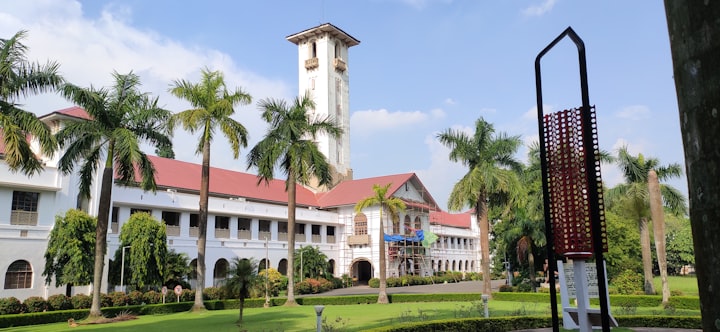
THERE is much excitement — and rightly so — around the Indian Institute of Technology (IIT) branching
out overseas. IIT-Madras has become the first one to make the significant foray. With India signing a
Memorandum of Understanding with Tanzania on Thursday in this regard, Zanzibar is set to have an
IIT campus from October. Next in line are IIT-Delhi and IIT-Kharagpur, which will have their campuses
in the UAE and Malaysia, respectively. The expansion of the footprint of India’s high-ranked institutes
and universities worldwide is aligned with the country’s foreign policy and commitment to
strengthening South-South cooperation. The internationalisation of education through such
collaborative endeavours is bound to deepen ties with the recipient countries through the spread of
tech education and student mobility as well as the resultant opening of more global research
opportunities.
However, at the same time, this development underlines how poorly our overall higher education
sector is generally placed. Other than the handful of high-performing institutes, such as the IITs and the
IISc, most of our universities and colleges are lowly placed in various global rankings. Shackled by the
lack of adequate funds and staff, they are struggling to give quality education to their students.
Even though the youth from the hinterland are talented, the educational institutions that they mostly
have access to are, unfortunately, not good enough to hone their skills. This impacts their employability
and potential to launch startups or register patents. A lot of degree-holders end up doing jobs much
below their capabilities or even opting out of their core field and area of expertise. The government
should prioritise empowering India’s youth with quality education along with enhancing the country’s
global presence.
Summary of the Editorial
1. The Indian Institute of Technology (IIT) is expanding overseas, causing much excitement.
2. IIT-Madras has become the first institute to branch out internationally.
3. India and Tanzania have signed a Memorandum of Understanding, with Zanzibar set to have
an IIT campus from October.
4. IIT-Delhi and IIT-Kharagpur are planning campuses in the UAE and Malaysia, respectively.
5. This global expansion aligns with India's foreign policy and its commitment to strengthening
South-South cooperation.
6. The internationalisation of education deepens ties with recipient countries through tech
education, student mobility, and increased global research opportunities.
7. However, this development highlights the shortcomings of India's overall higher education
sector.
8. Apart from a few high-performing institutions like IITs and IISc, most Indian universities and
colleges rank poorly in global rankings.
9. These institutions struggle with inadequate funds and staff, impacting the quality of education
provided to students.
10. The talented youth from rural areas often lack access to quality education institutions, limiting
their potential.
11. This lack of quality education impacts their employability, ability to launch startups, and
register patents.
12. Many degree-holders find themselves in jobs below their capabilities or diverging from their
area of expertise.
13. This situation calls for government action to improve the quality of education in India.
14. The government should prioritize empowering India's youth with quality education.
15. This empowerment should go hand-in-hand with enhancing India's global presence in
education.
The Supreme Court of India’s _____1_____ to advance directive norms are welcome, but legislation will
be better. When the Supreme Court granted legal status to the concept of ‘advance medical directives’
in 2018 and allowed passive euthanasia, subject ______2______ stringent safeguards, it was seen as a
vital recognition of both patient autonomy over end-of-life decisions and the right to a dignified death.
However, doctors later found that some of the specific directions turned out to be “insurmountable
obstacles”. In a recent order, a Constitution Bench modified the directions to make them more
workable and simple. The advance directive no more needs to be countersigned by a judicial magistrate.
Instead, it could be attested before a notary or a gazetted officer. Instead of the magistrate, it is enough
if the notary or officer is satisfied that the document is executed _____3______, without coercion or
inducement, and with full understanding. The original guideline that the executor should name a
guardian or a close relative who would be authorised to give consent to refuse or withdraw medical
treatment, in the event of the executor becoming incapable of a decision, has been modified to name
more than one guardian or relative. ______4_____ the magistrate being tasked with informing family
members about the document, in case they are not present at the time of its being executed, the
______5____ is now on the persons themselves to hand over a copy of the advance directive to the
guardians or close relatives named in it, as well as to the family physician.






Comments
There are no comments for this story
Be the first to respond and start the conversation.